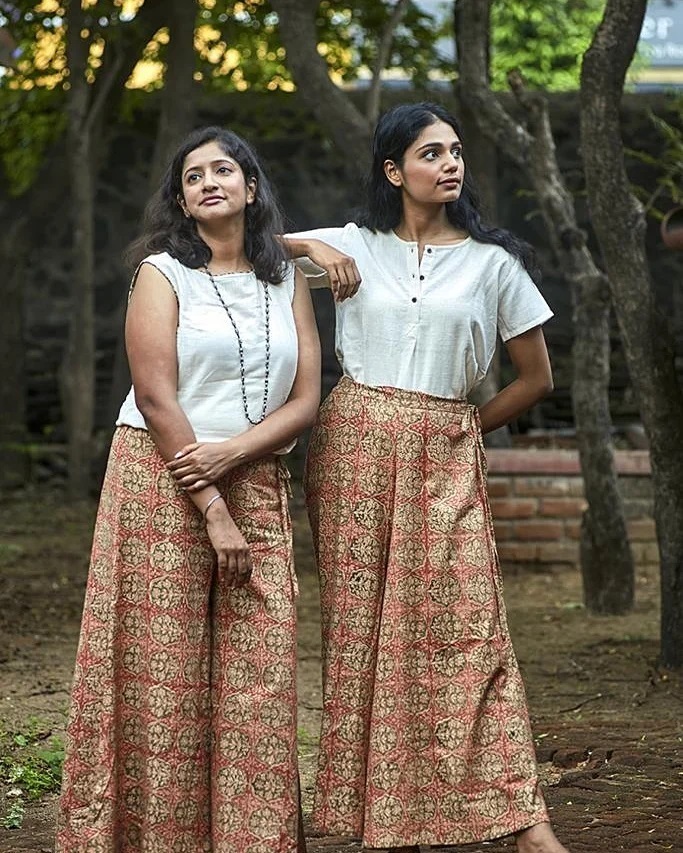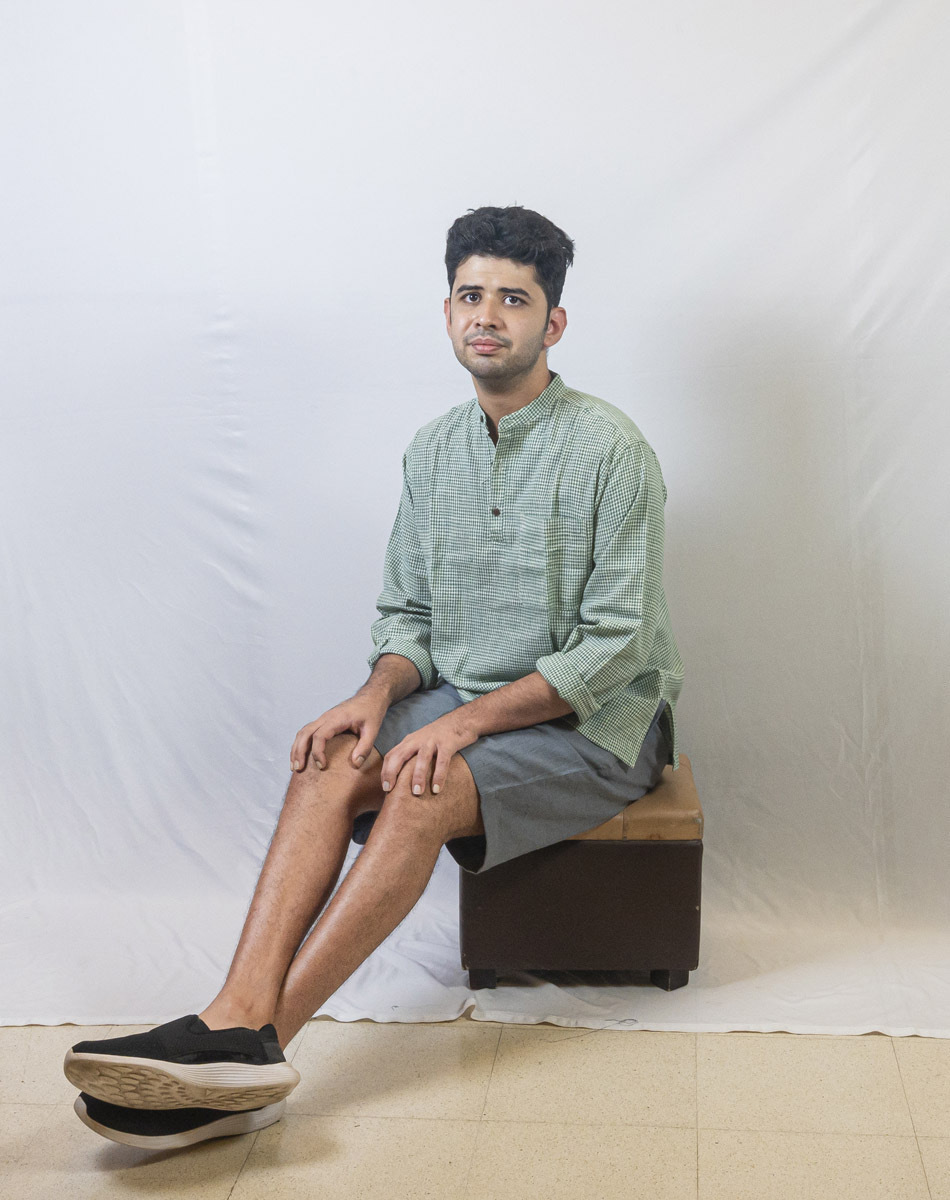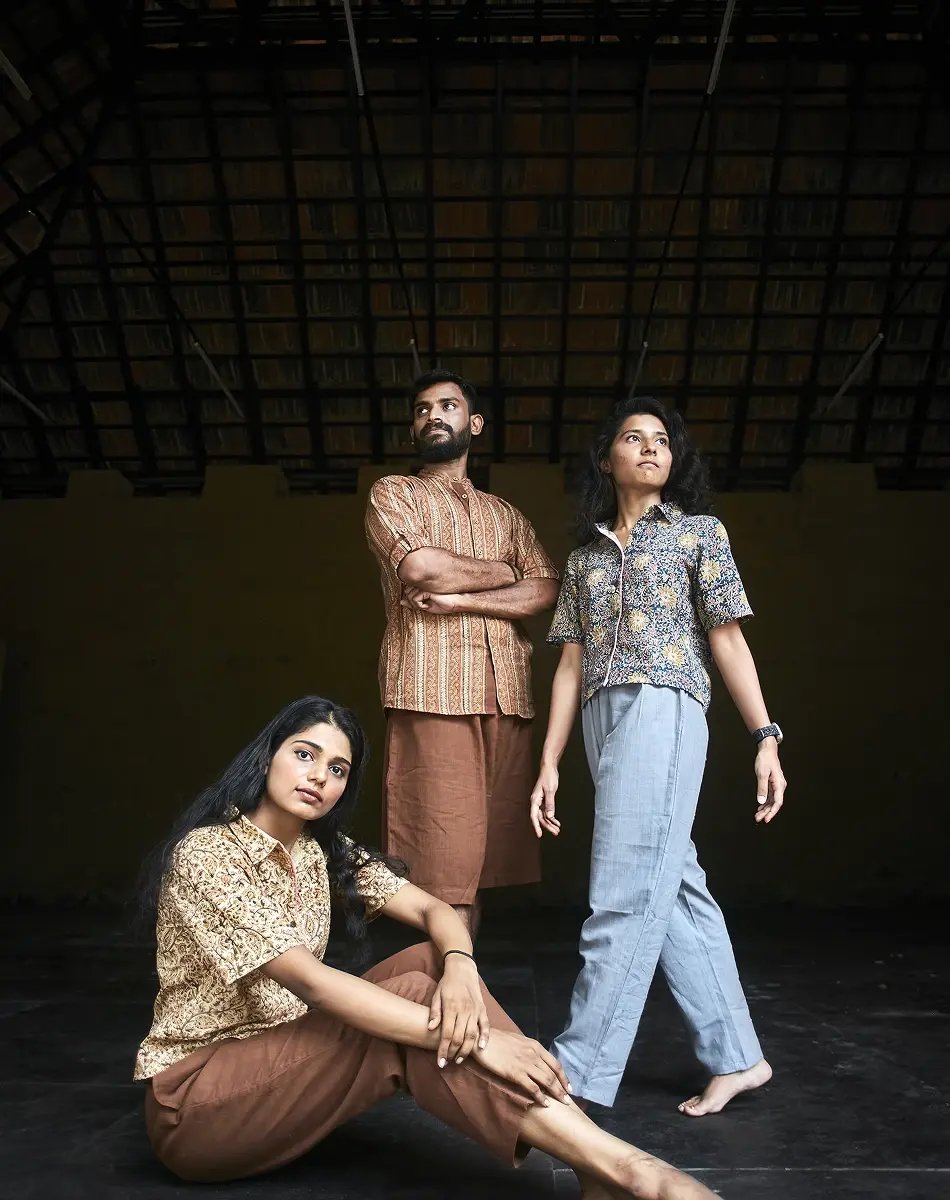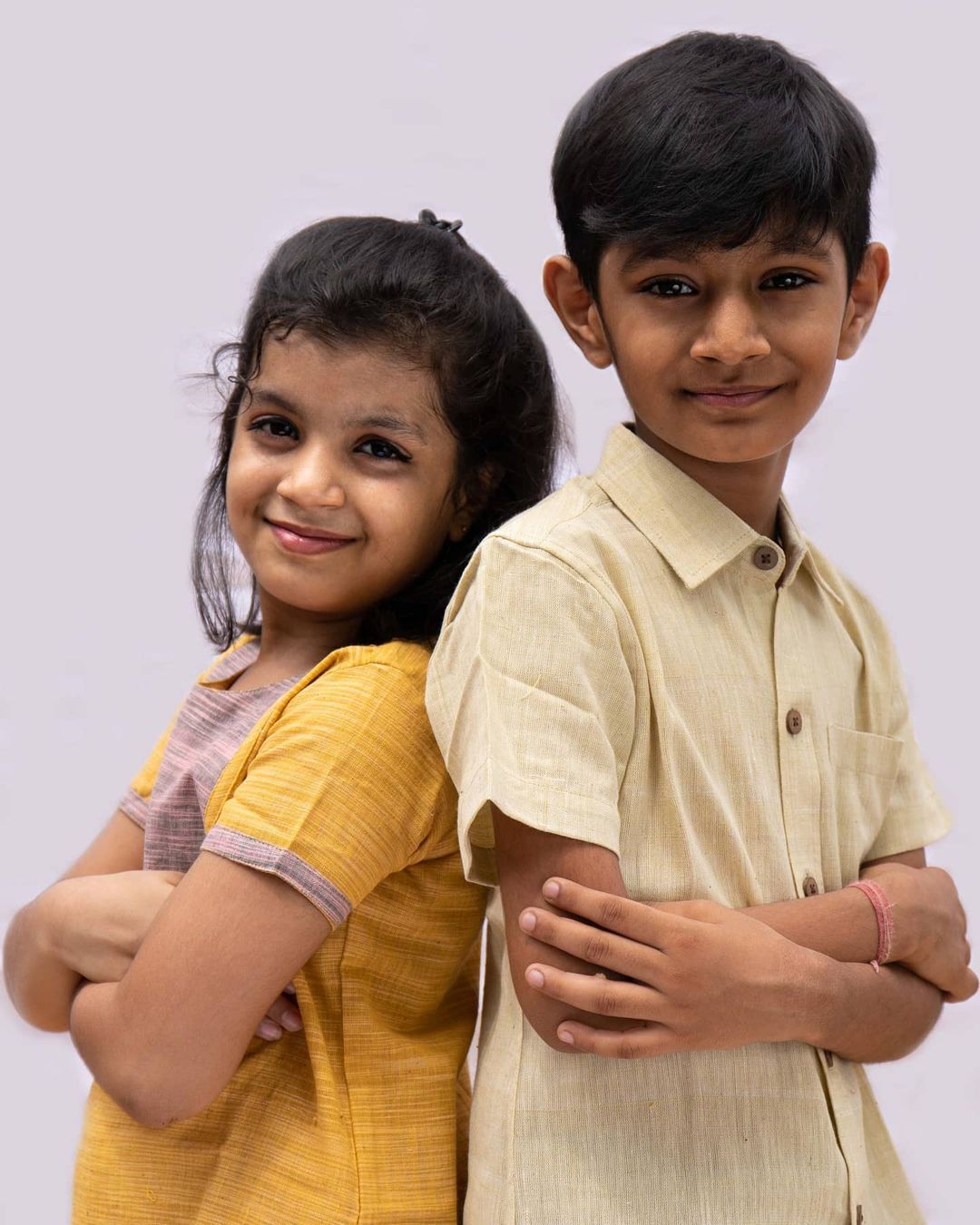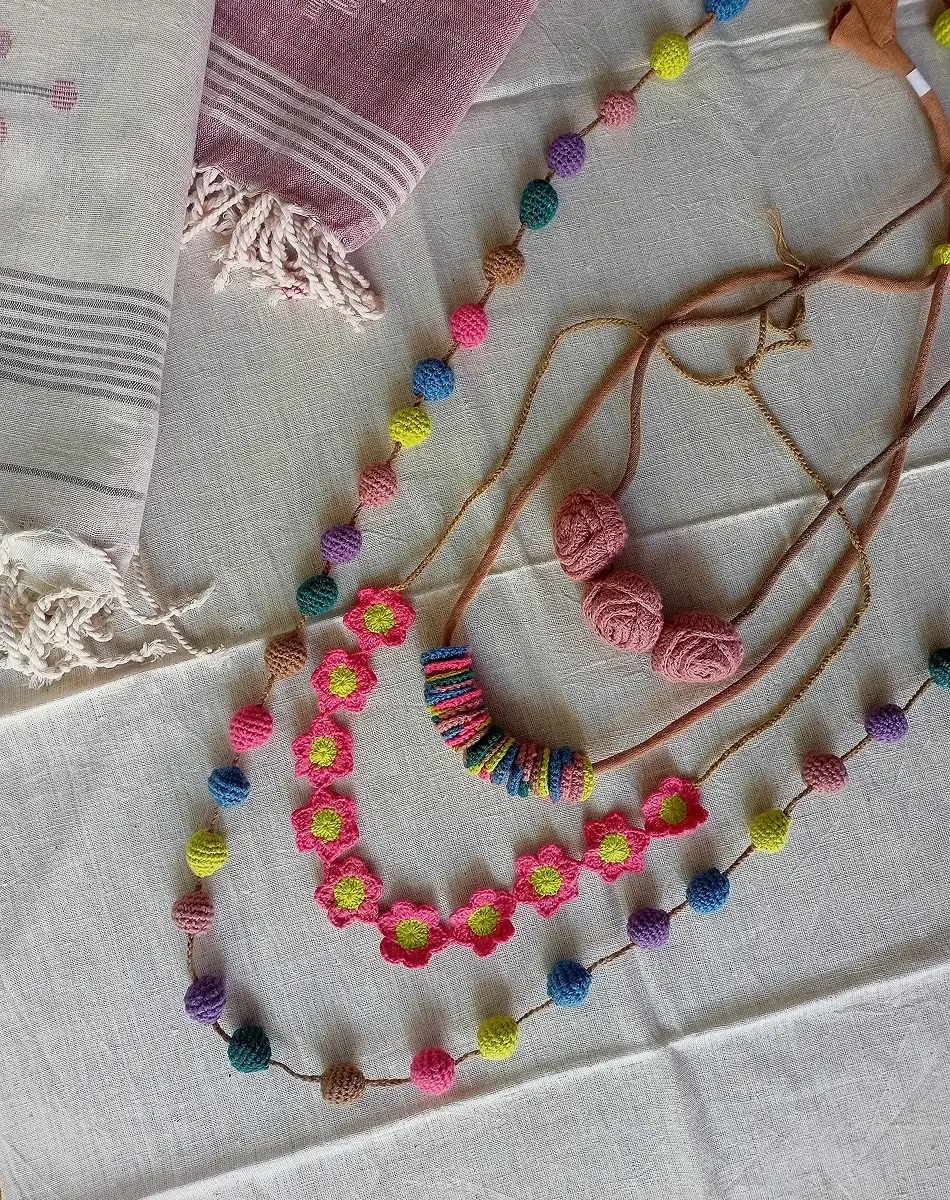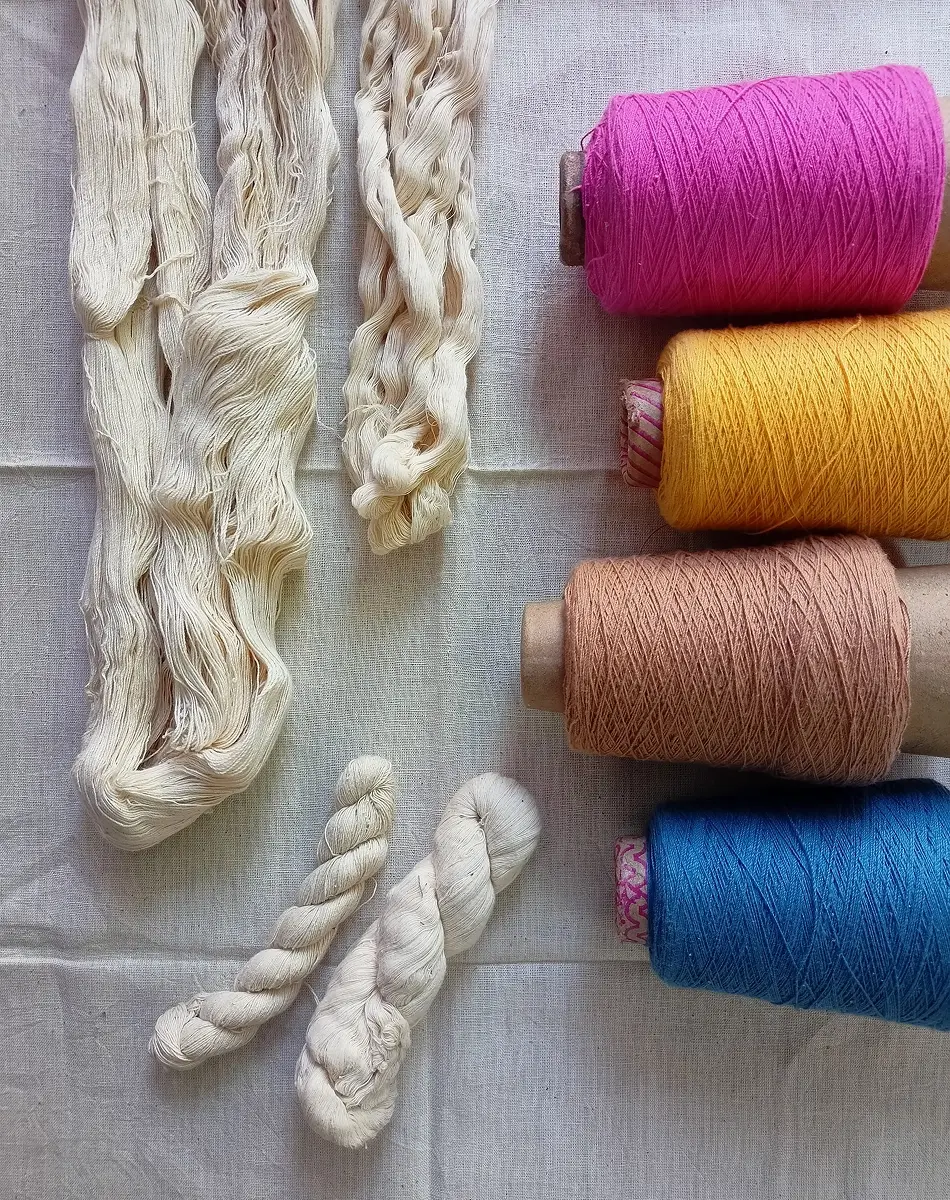Tula India – Organic Desi Cotton, Handspun, Handwoven, Natural Dyed and Manual Tailored Clothing
- About Us
- Products
-
-
-
-
- WomenChoose from a wide range of colourful Tops/kurtis made using rainfed organic cotton, hand spun, hand woven, naturally dyed and manually tailored.
- MenFrom half sleeves to full sleeve shirts, short kurtas to long kurtas. Make your choice!
- KidsA wide collection of kids wear for boys and girls using the finest and softest cotton.
- BottomsChoose from our range of unisex pajams, Palazzo, Shorts, Towels and more
-
-
- Value Chain
- Ambassadors
- News
- Events
- Catalog
- Gift
- Gallery
- Contact Us
Why TULA?
Even one life saved or bettered is worth the effort!
But whose life is it?
A farmer? How?
A day of a farmer starts before sunrise and ends around 10pm in the night. No Sunday, No leave, No holiday. To a farmer, his/her world is always the mother earth he (dis)owns and the people around him in his village, that is where he earns his living. Any crop for a farmer starts with forcing them to buy the seeds, as most of them couldn’t save them from previous harvest, especially cotton farmers. But how will he/she even save? They cannot save seeds from the cotton they plant, like it was done for 10000 years, because they are of American/Hybrid varieties, whose seeds are bought from one MNC- “Monsanto”. And then the huge investment of insecticides and pesticides for a small (poochi) boll worm continues alongside the irrigation expenses.
They spray hopefully waiting for the huge yield to come so that they regain what they invested. Knowingly or mostly unknowingly they inhale what they spray which increases their monetary and time investment on their own health. So, now its in the hands of nature on what to give and what to take, whether it is health or yield. Even if we assume that both are given, there is no guarantee of the monetary returns as rate of the cotton varies not only depending on one farmer, but it depends on the whole of cotton produced across the state/country. When the yield is high, rates are low; when the yield is low, rates are high. Either way it around the same amount that a farmer gets. There is just a slim chance for a farmer to break even and not sure about the profits. Moreover, nature also has its limit of bearing so many harmful chemicals, hence after a few seasons it’ll chose to not give forever due to lack of its good health (soil fertility, organic matter, water holding capacity, lack of diversity in the nutrients)
In India only 5% is cotton fields in the whole of agricultural land, where as more than half of the pesticides sold/used is for cotton fields.
What if the nature decided otherwise on the yield front? For a small scale farmer it is almost impossible to bear such a huge loss for two continuous seasons. He has waited and bore enough – wife asking money for children, neighbors/relatives asking how is his crop growing, loan lender asking back for his money and the news spreading in the whole village and much more. It’s disheartening to see the amount of respect and money(not for his greed, just enough for his need) a farmer owns in this society, without whom there is no food/shelter/clothing.
Let’s not talk about what if nature decided to take both. Let’s talk about what can a farmer do to be able to continue farming not for our food/shelter/clothing, for his livelihood.
Traditionally, a farmer (also all our smallholder cotton farmers) always saves seeds which is possible with native variety cotton seeds. Each state was having hundreds of varieties which nature gave by itself and which were saved from generations. Those cotton seeds are sowed considering the weather and soil suitability along with other crops too which can leave nutrients into the soil/which can attract worms onto it and save the main crop, etc. This helps our farmers with financial security as each crop can be harvested at different months and throughout the year there is cash flow. Also they grow the same crop in batches so that they can harvest easily batch wise and if nature turns around them, they have the other batches saved. They grow using rainwater, without any irrigation, thus not pumping the ground water up. As desi/traditional/native seeds are pest resistant and drought resistant, there is an inbuilt natural advantage, In case of rare pest attacks, there are many natural ways to repel the pests. Also we ensure our farmers beforehand that we are ready to pay a certain amount which is higher than the market price so that they have a guarantee that there is dignified, fair income for sure. If there are any extra seeds left after saving enough for the next season, their cattle enjoy having them as their fodder. This way their huge investment is taken off their shoulder and makes their lives easier.
70% of farmer suicides happen in cotton fields in India. The statistics (of the Govt’s own records) show that in the last 15 years or so there has been a farm suicide every half hour.
We work with 50 desi cotton farmers from Akola, Maharashtra and an 25 each in Karnataka and TamilNadu. Though due to weather vagaries we have never been able to get cotton from all the 3 states in the same year. Each of you is welcome to be a part of this journey too 🙂 coz only together we can do more, before we lose them all.
A spinner? How?
Spinning is an (dying) art of taking the yarn from sliver(a later stage after processing cotton fibres), which determines how thick or thin the fabric is going to be. . In Gandhian era, spinning was a community activity, where men/women mostly used to sit together, chat and spin during their free time, apart from doing farming. So that they have a fixed source of income throughout the year. Those were the days where every village had weavers who were ready to take the yarn spun by hand and weave fabric out if it. That was the time when a widowed woman took up spinning as her means of life and could take care of her children .As days passed, it was difficult to find weavers locally who would take these hand made yarn and weave, as they shifted to powerlooms.
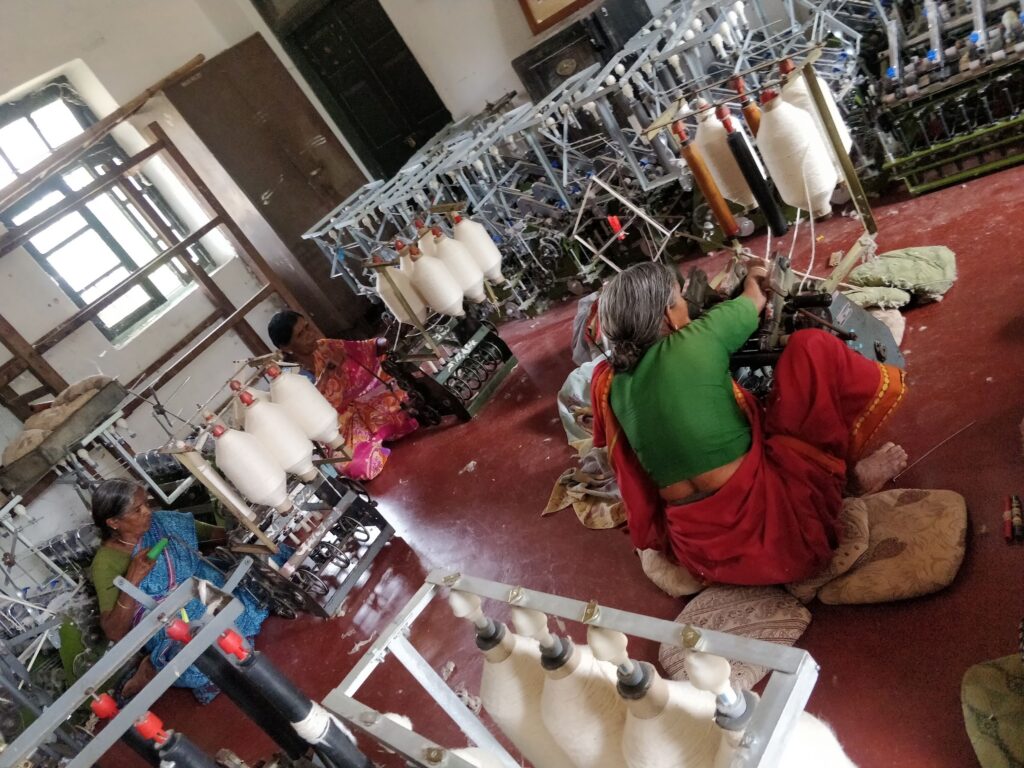
For a weaver to weave for a month, a spinner have to work for two months if yarn is spun by hand. Its unimaginable, how many spinners had started to find it difficult to sustain spinning and started looking for other work to make their living. By that time Industrial revolution has started in India and people were slowly starting to leave their villages, their people, their way of life in search of greener pastures.
But why do you want a person to sit and do the monotonous job to make your fabric more breathable? Its not for us. Its for them. People who are interested in spinning, whose choice is to stay in that village, who want to make some small money for their living, and for those who cannot move out due to various reasons.. Even now, in some places, women of the village, gather at a place where all of them chat, spin and enjoy their friendly time along with their earning. Its also a way of escaping from their family drama atleast for sometime 😉
Its our misfortune that we lost spinners who could spin thin yarn by hand that fabric woven with it would fit into a match box, like the Muslin of the yore.
A Spinner saved from relocating in search of a living! We are working with 100 local spinners from Tamilnadu and Maharashtra.
What happened to all of them?
During British rule, they imported machine spun, machine made textiles to India which was much cheaper when compared to our handmades. Yes! Even then Handmade was of higher cost than machine made fabric. People were given less wages by Britishers for most of their works and that’s how we were forced to buy their cheaper fabric. And the irony is that the raw material required for the machine made fabric was taken/exported from India. Our farmers were forced to grow cotton(American variety) which is suitable for their machines which were designed for long staple cotton (staple length meaning avg length of fibre of a particular variety). Thus they sold mill made garments to us with enough profits for them.
Handweaving is a special skill and requires a lot of effort and coordination that even if one yarn out of 2000 yarns break, the weaver will have to identify just by looking at the strands and by feeling with hand and join the broken one throughout the day. Apart from this there is a lot of process behind like –
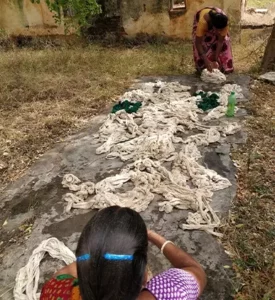
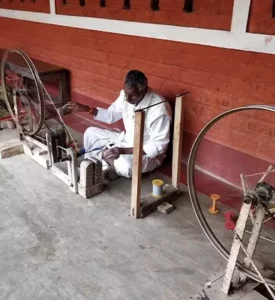
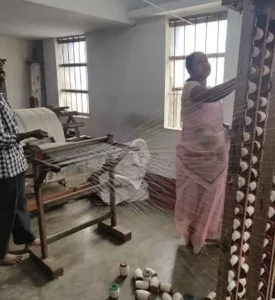
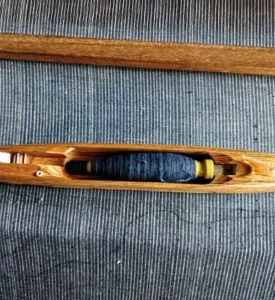
Then weaving the desired pattern/ motif and joining the broken yarns while weaving.
Because of the tedious process and lack of patronage from the comunities, now handloom weaving is on the wane.
Hence, it is very important for us and we make sure to fairly remunerate all the men and most importantly women involved in the weaving process who often get ignored.
It is not just a weaver who is important, also the people who do the pre-loom process.
A weaver saved from migration! We work with 100 weavers from Tamilnadu, Karnataka, Andhrapradesh and West Bengal. Choosing handloom, you can be proud that you are supporting the local artisans.
A piece of land and water & the life around it? How?
What color do you like to wear often? Did you ever think where that colour is coming from? Tints or tones, bright or pastels, white or color comes from chemicals. Yes! Even white comes only when we bleach cotton fabric with chemicals, else the natural color of cotton fabric is off-white, which we call ‘Kora’.
Any dyeing (natural/chemical) requires a lot of water. But the water coming out from the chemical dyeing plant has to be treated before letting it out. But most of the cases its just released as is, into the rivers/lakes/oceans nearby. Into the same rivers that we have swum in our childhood, now we cant even stand around it. Into the same river, whose water was used for agriculture. But now itseeps into the soil beneath it polluting the ground water. And there is no question of marine ecosystem being alive – fishes, corals, shrubs, shells, etc. inturn taking away the livelihood of fishermen communities.
We are getting the so called “beautiful/bright colors” also at the cost of health of people and environment . The contamination to land, air, water and to human lives is so high and the ill effects very evident.
Is it fair on us to keep the lives of so many at risk for us to feel that we are looking good in those colours?
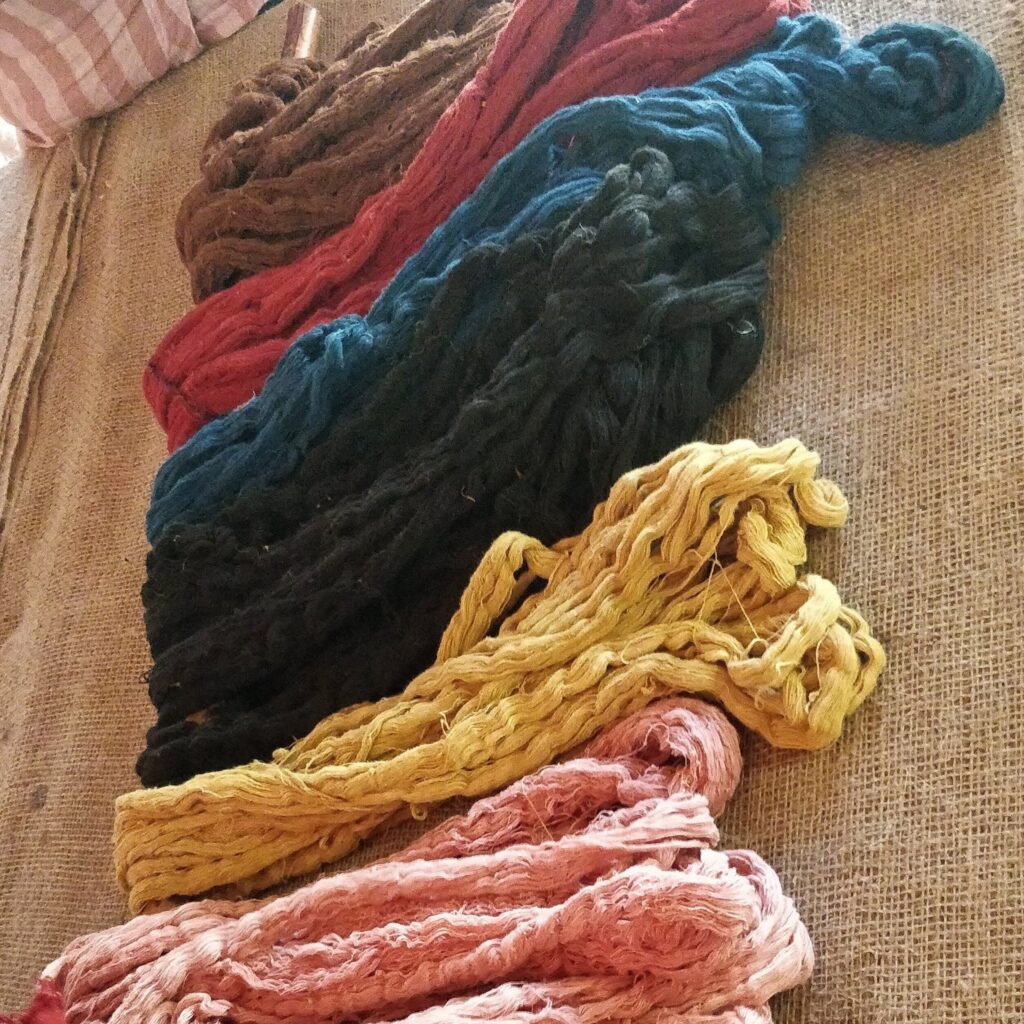
On the other hand, we can do Natural Dyeing. But again is it fair on us to take the color from nature for us to feel colorful? There is a moderation that is required even in Natural dyeing.
All our colors come from Nature – Roots, Bark, Leaves, Flowers. We are conscious of not using anything consumable for dyeing. Our dyer says that “We shouldn’t consume nature, to make natural colors”. So they use only those natural resources which are in abundance and are replenishable and sustainable. Beauty of natural dyeing is that you can be in sync with nature. Example, you can get the Palash flower, which is used to extract pink, only when it blooms. These are seasonal and hence much planning and moderation is required. All the water used here is with added nutrients of nature and can be directly fed to the plants, or used for agriculture directly.
Happy soil, Happy dyer 🙂
A tailor? How?
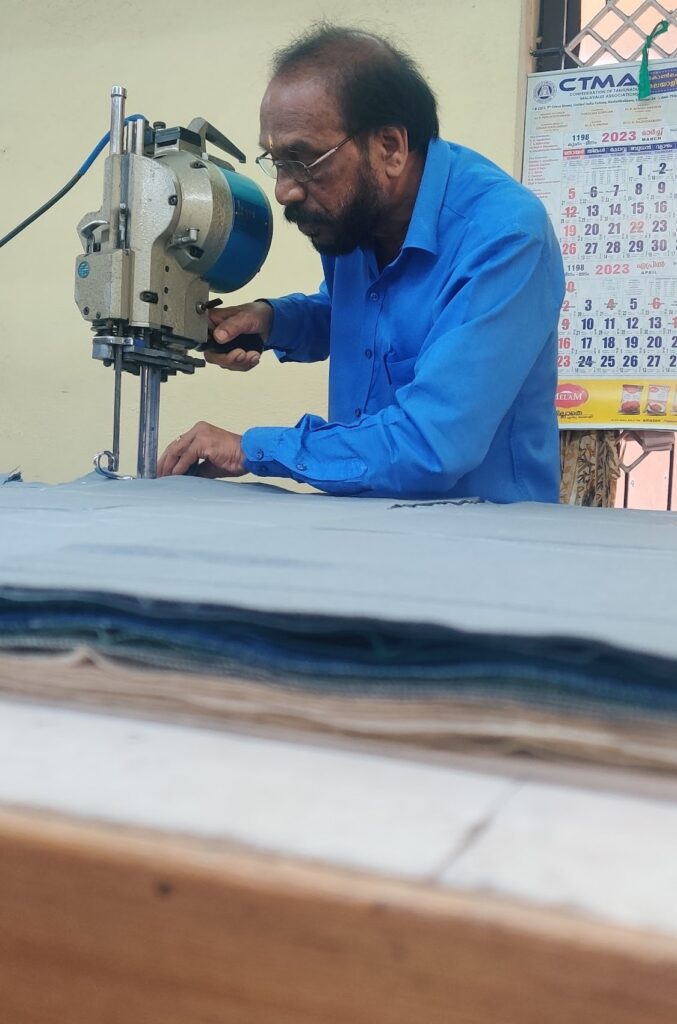
Happy soil, Happy dyer, Happy artisans, Happy tailors, Happy you 😉
BTW, To feel the fabric that benefits so many livelihoods, you can shop here – tula.org.in/catalog
It makes an ideal gift too.
– Jahnavi P, Designer, TULA

